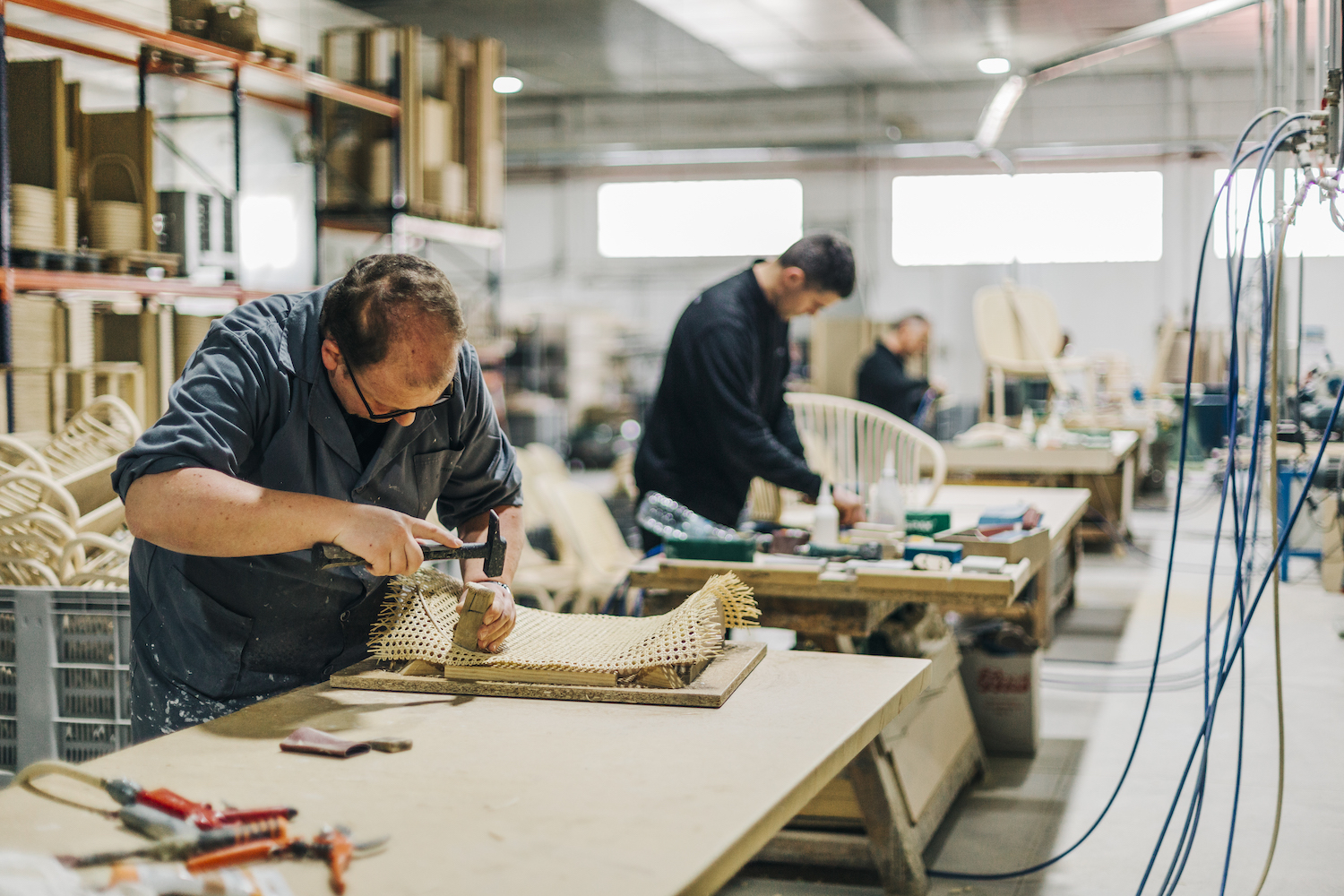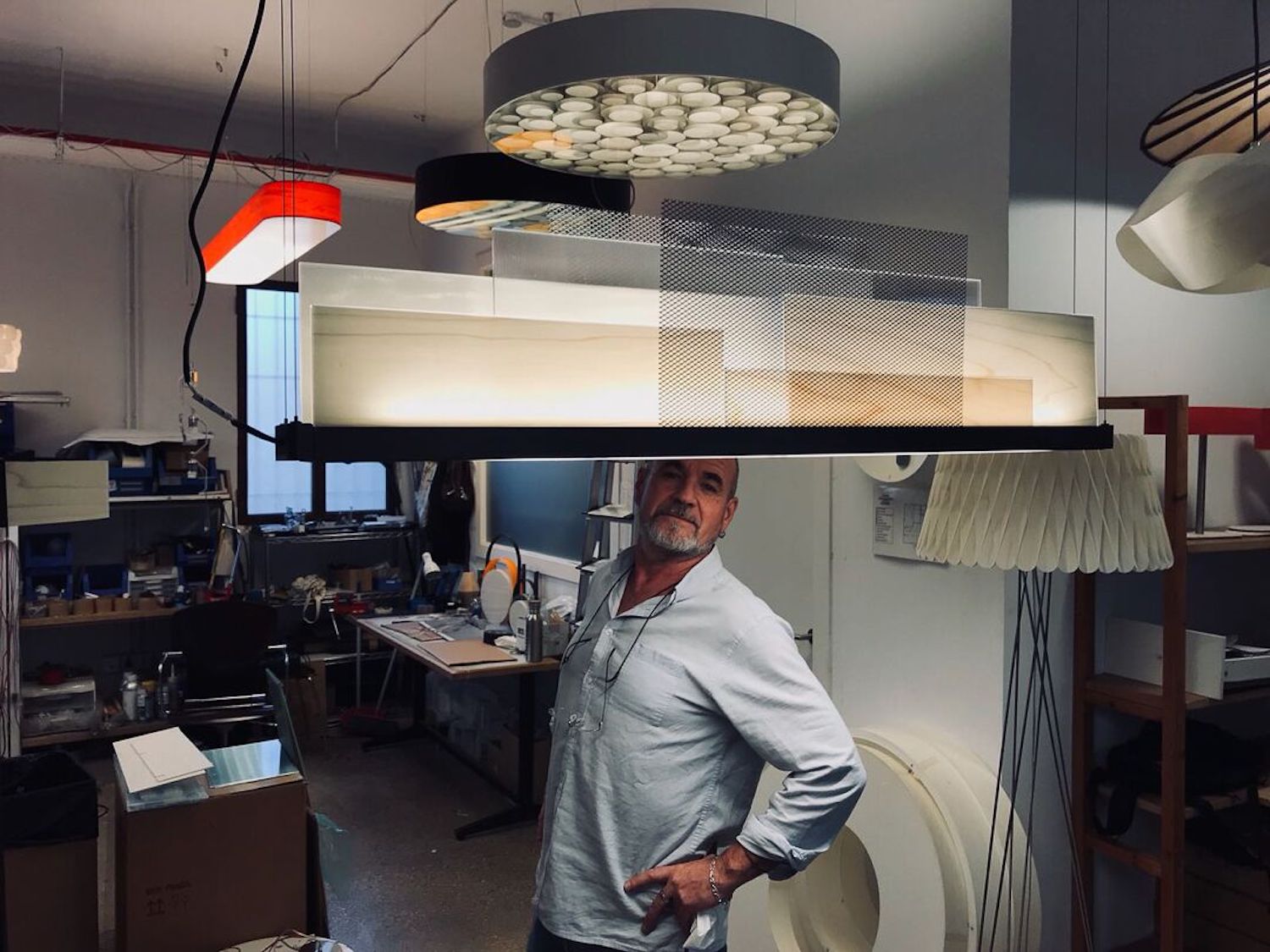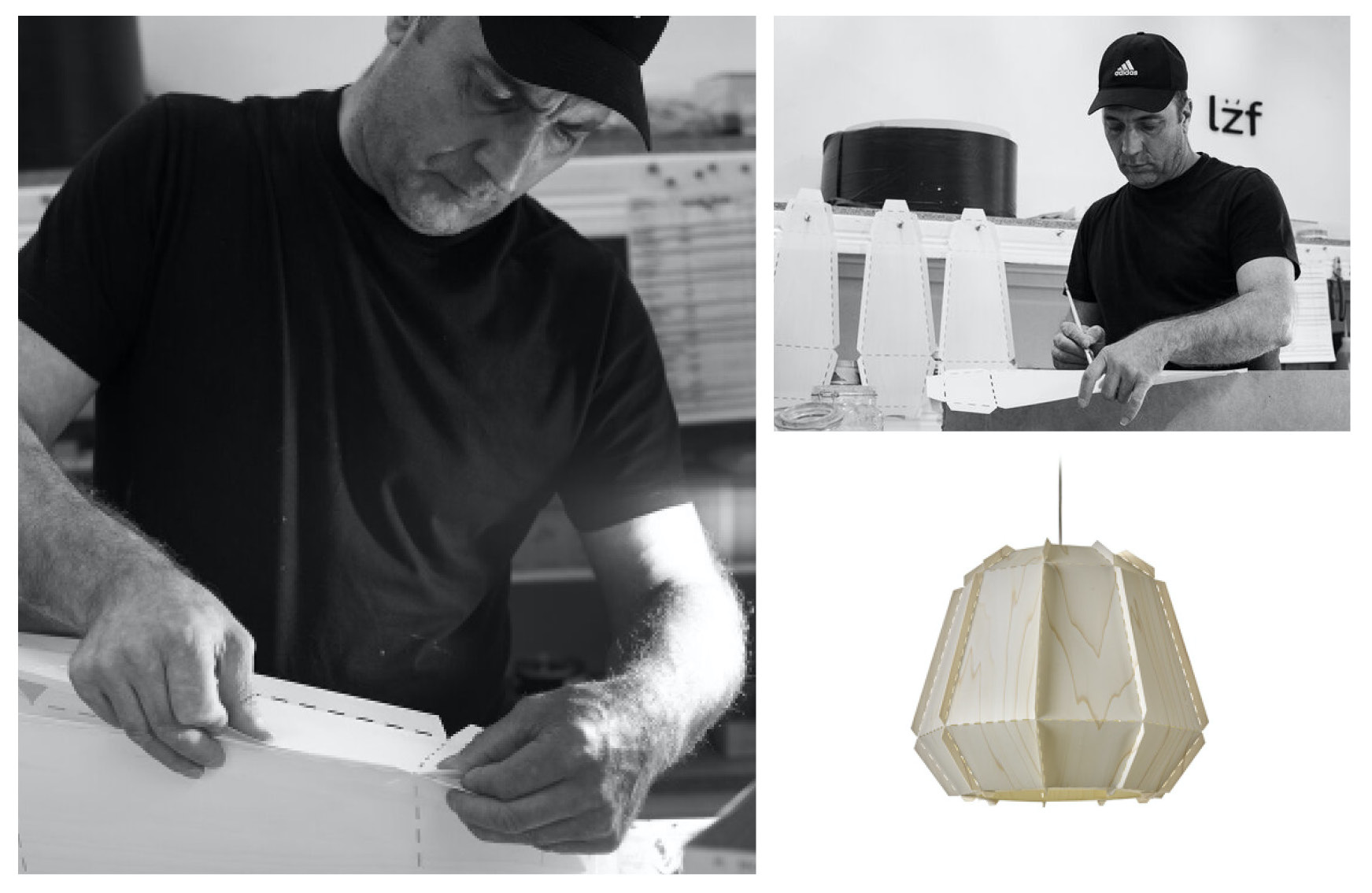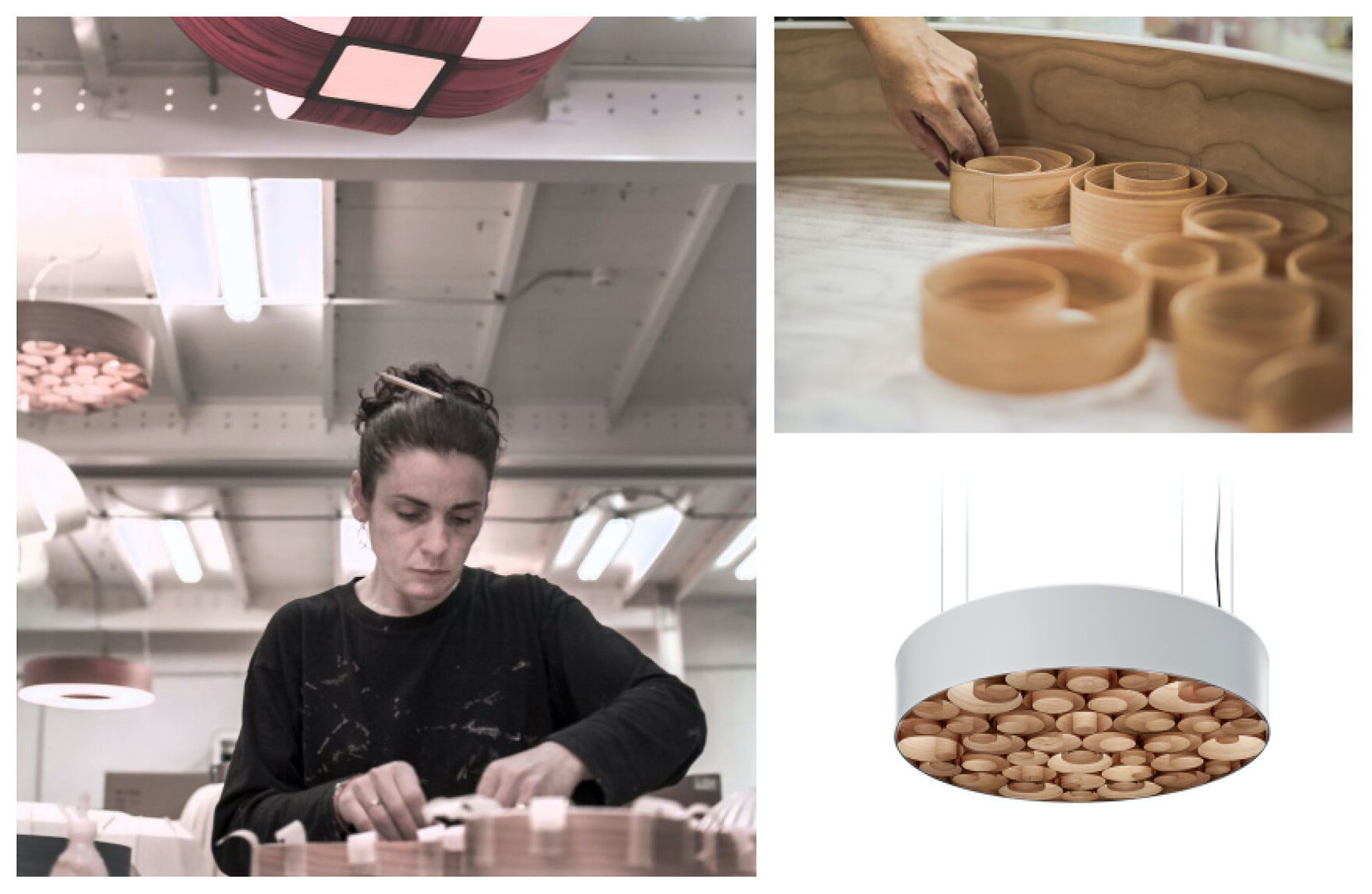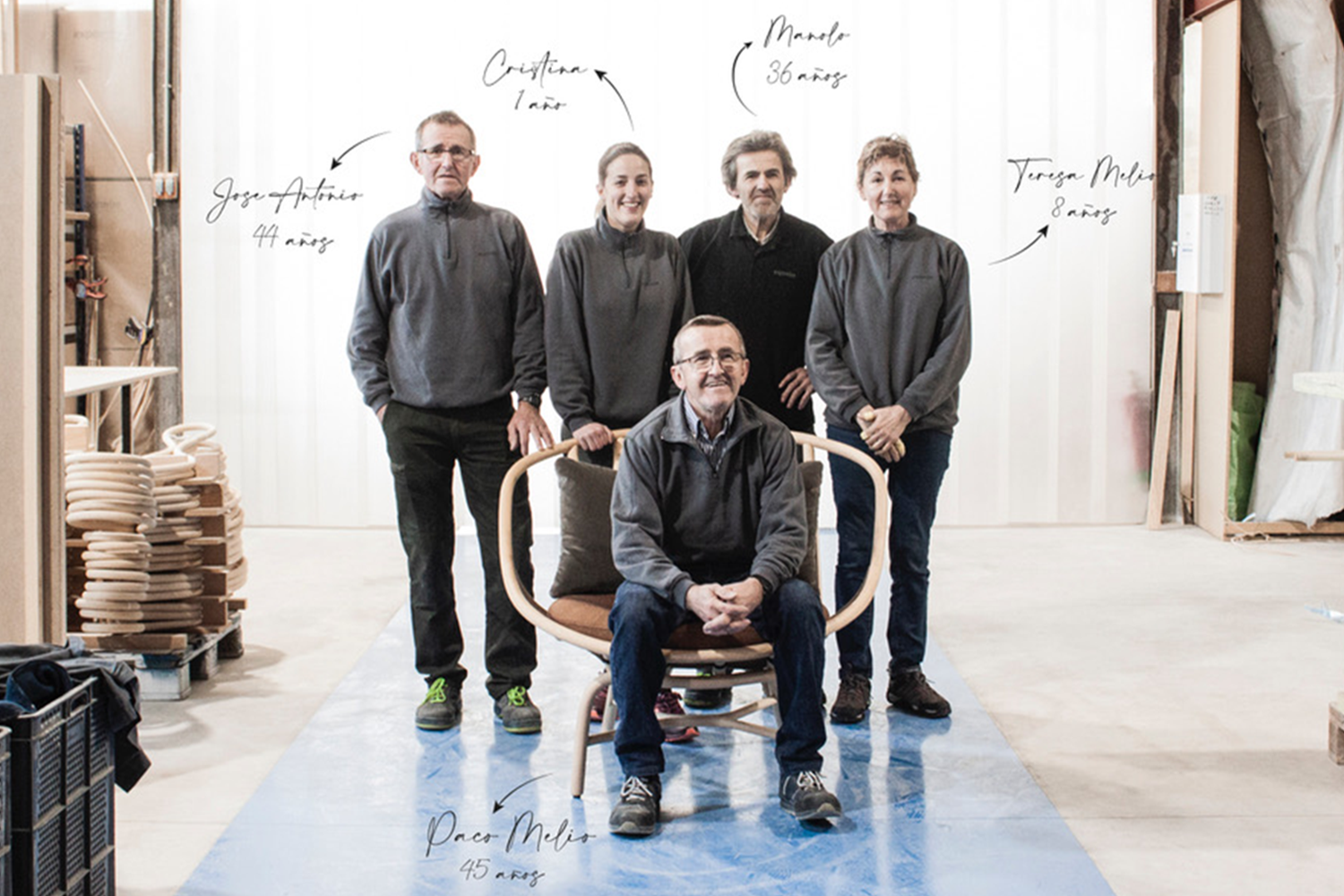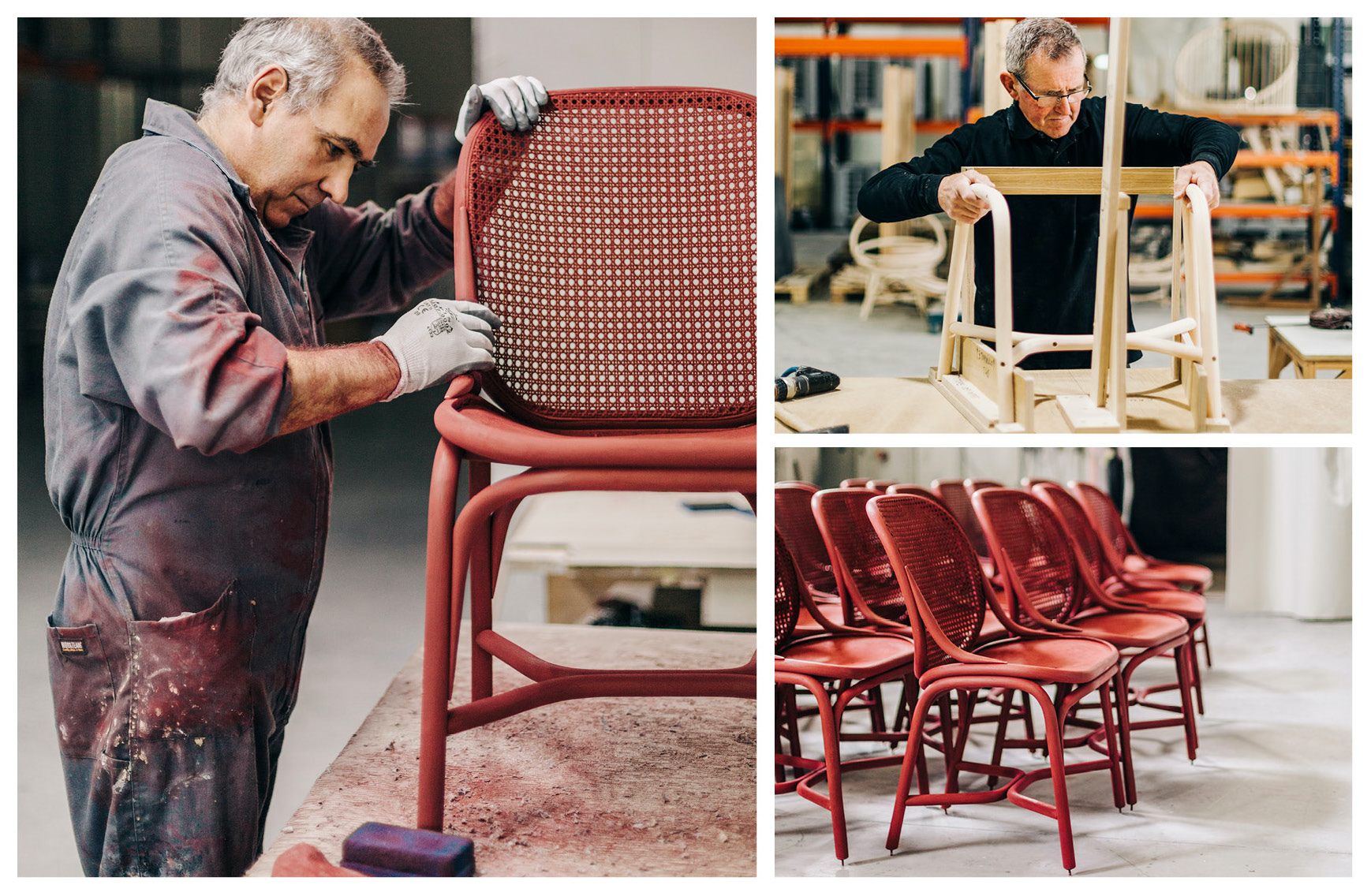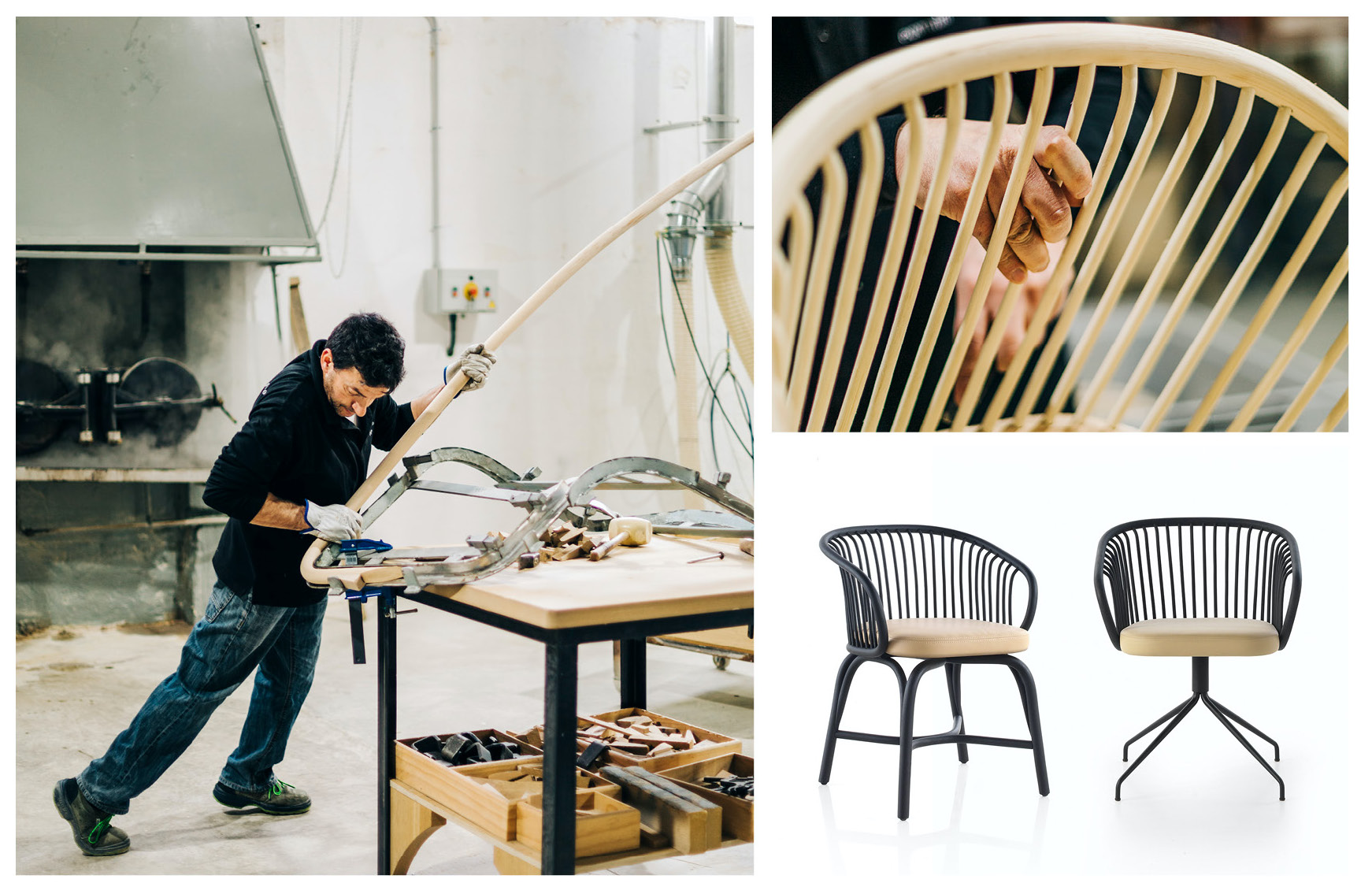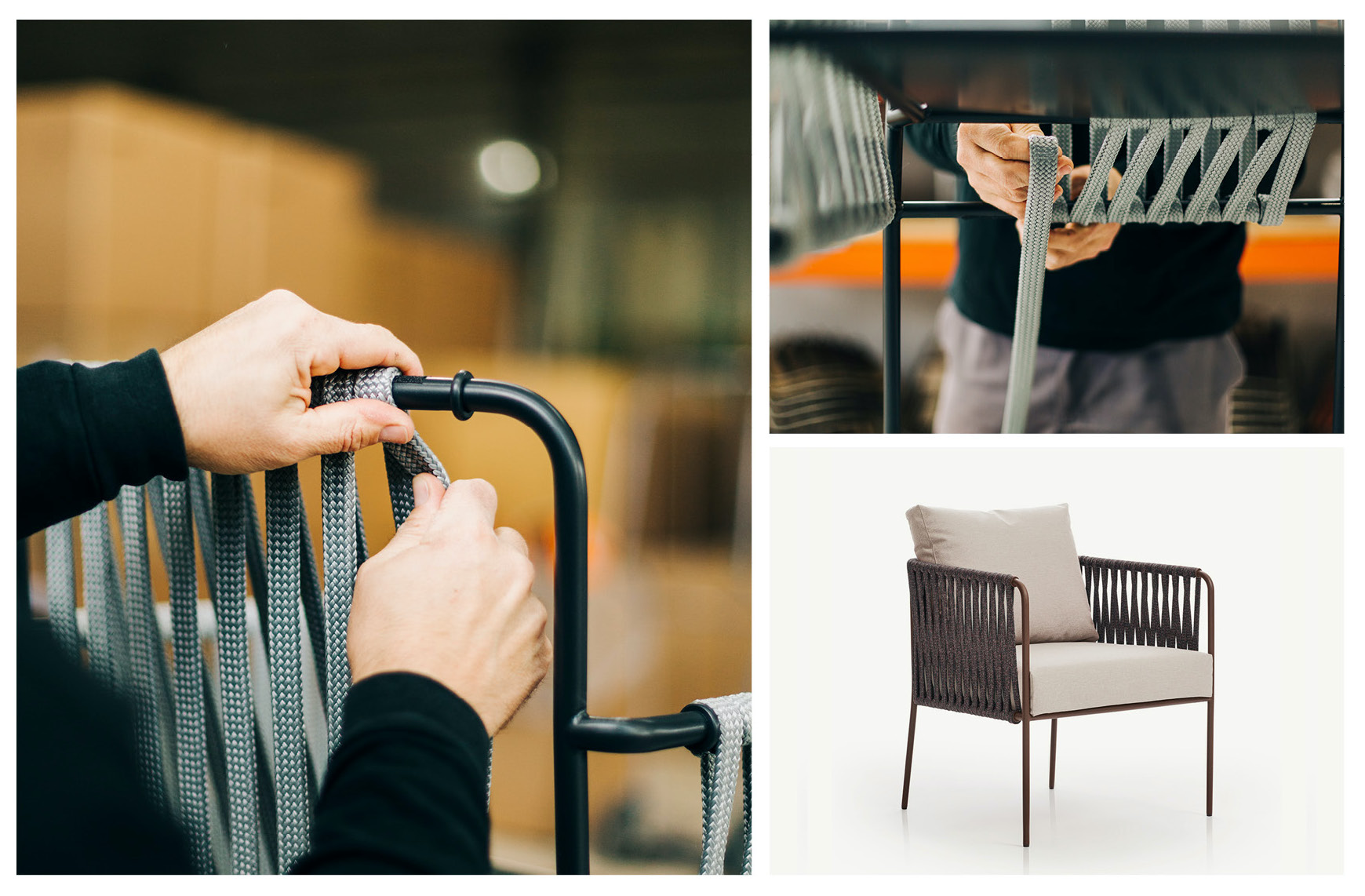GET 20% OFF
By subscribing to our newsletter
Meet the makers of our handmade furniture and lighting
Now, more than ever, we need to celebrate human connection in any form we can. Expormim and LZF are renowned for their furniture and lighting produced by hand, so we invite you to meet some of the people behind these much-loved brands.
Mariví Calvo and Sandro Tothill founded LZF in 1994, creating beautiful handmade lighting using sculptural timber veneers. Most of the LZF team began their careers in other artisanal areas, such as ceramics, shoe making, tailoring, wood and rattan working, and are naturally adept at working their hands. They hand assemble all lights in the LZF factory located in an old winery on the outskirts of Valencia.
Jose (above), a former ceramicist, makes the lighting prototypes. He develops the theoretical designs into pre-production models, helped here by Gigi (below) who stitches together a model.
Racquel (above) shapes and form's the veneer shades, while Ana (below) checks for imperfections in the veneer, before the patterns are prepared.
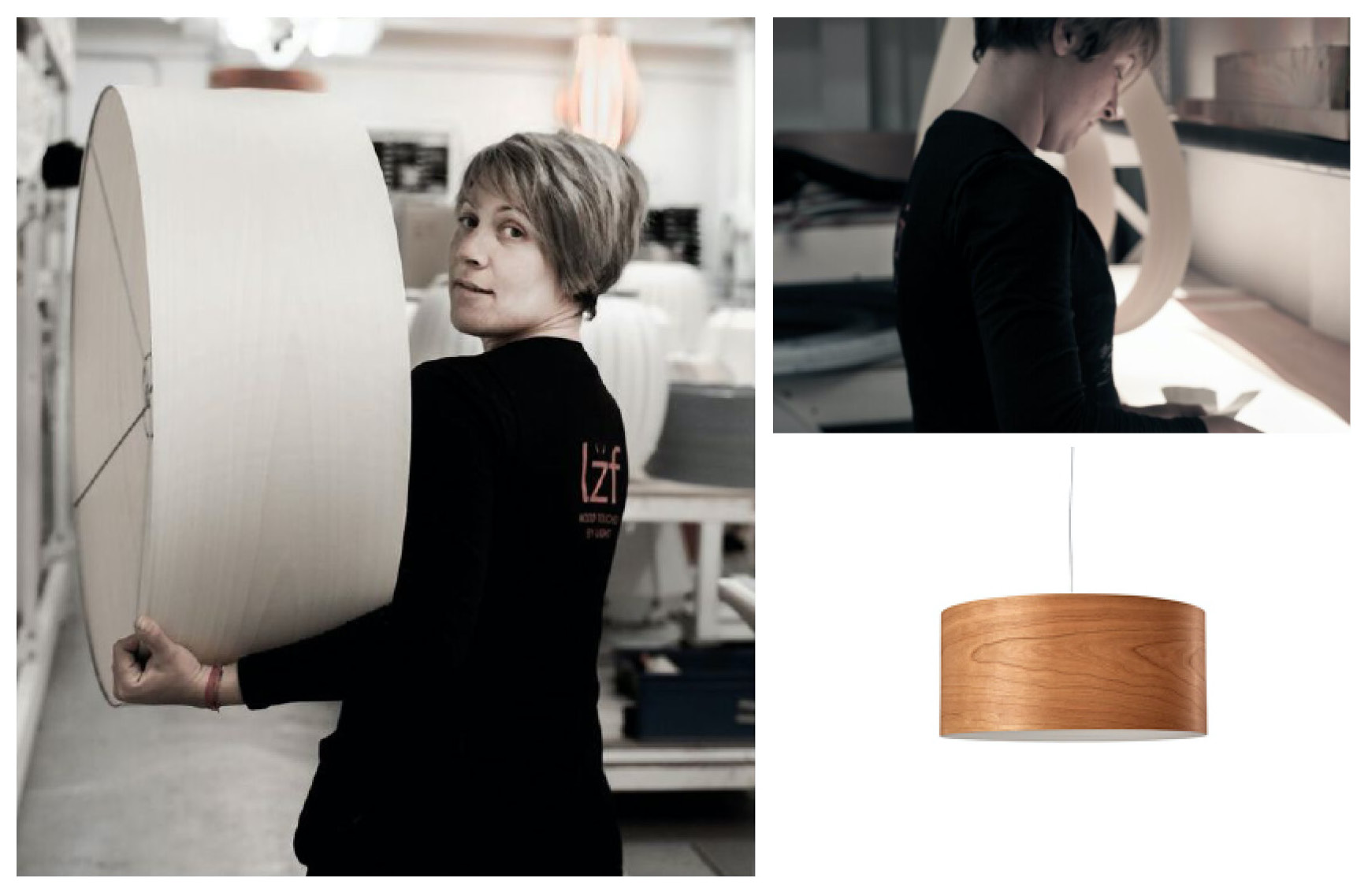
Once a model goes into production it takes many hands to assemble each light, with the meticulous care and detail enhancing the beauty of the sculptural shades. Like all handcrafted objects, traces of handwork imbue the shades with a sense of warmth, friendliness and sincerity, and we celebrate the subtle variety as evidence of humanity in the handwork process.
Expormim has been handcrafting furniture since the early 1960s, creating artisanal products handmade from natural materials. Today, the Melio family is at the helm of the company (above) and includes four siblings – Paco, Jose Antonio, Manolo and Teresa – and Paco’s daughter Cristina. Paco and Jose Antonio have been at Expormim for an impressive 45 years and 44 years, respectively, while Christina is celebrating her first-year anniversary.
Expormim continues to make furniture by hand in its factory in Valencia, Spain. Its team of craftspeople shape, sand and assemble the frames of the natural rattan chairs by hand, as well as coating and upholstering them by hand. In his book The Power of Human: How Our Shared Humanity Can Help Us Create a Better World, Adam Waytz explains that we appreciate the effort and work that goes into handcrafted objects and we enjoy them more as a result.
Rattan is almost unique as a furniture material in that it requires no additional components to function, serving as frame, seat and back rest, as can be seen in Jaime Hayon’s Frames collection (below) and Oscar Tusquets Blanca’s Fontal range.
For the Huma chair (below), bent rattan elements are assembled to create a flexible yet resistant, refined and graceful structure.
Handcrafted production requires honesty in construction and materials. As a result, the objects express a simplicity that belies the effort and skill required to make them. This is evident in the Expormim’s Lapala and Nido chairs (below), in which the craftspeople meticulously weave and wrap high-resistance rope around stainless-steel tube frames.
Handmade products have always been a counterpoint to mass production. William Morris founded the Arts and Crafts movement in the late-nineteenth century as a reaction to the Industrial Revolution. In the 1960s and 1970s, studio craft practices celebrated the handmade as a rejection of post-war materialism and mass production. Today, we embrace the handcrafted in the midst of a predominantly digital and automated world. Indeed, we prefer handmade products because of one simple reason: love. We believe that handmade products are made with more love than machine-made.
For more information about handmade furniture and lighting by Expormim and LZF, drop us a line at the KE-ZU showroom in Alexandria or view the products online.
- 2020
- 2019
- 2018
- 2017
- 2016
- 2015
- 2014
- 2013
- 2012
- 2011
- 2010
- 2009


